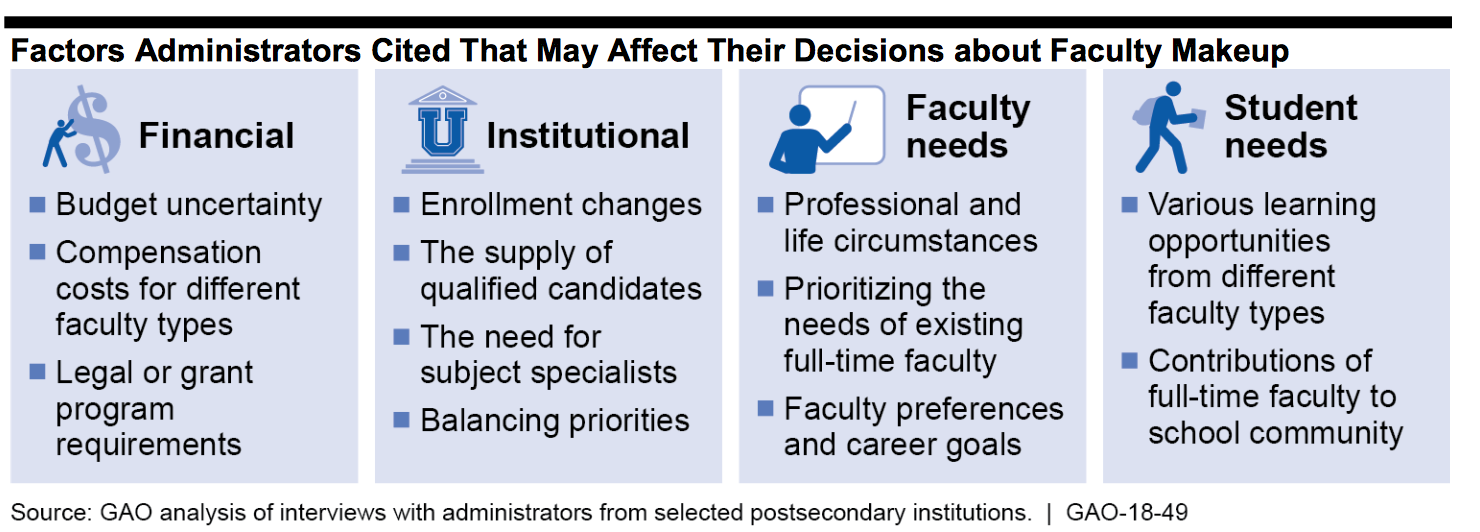You have /5 articles left.
Sign up for a free account or log in.
The Government Accountability Office on Monday released a report called “Contingent Workforce: Size, Characteristics, Compensation and Work Experiences of Adjunct and Other Non-Tenure-Track Faculty.” The paper follows up on a 2015 GAO report that found instructors off the tenure track earn less and have less stable positions than their tenure-track and tenured counterparts. This time, GAO looked at the makeup of the higher education workforce and what professors off the tenure track like and don’t like about their working conditions. Major findings include that non-tenure-track professors teach about 45 to 54 percent of all courses at four-year public institutions and higher proportions at two-year publics. Echoing other data on adjuncts, GAO found that full-timers off the tenure track may have annual or longer-term contracts providing relative job stability, while part-timers have little job stability. GAO also interviewed administrators at select institutions, who said that full-time, non-tenure-track professors often carry heavy teaching loads and sometimes take on additional responsibilities, such as research or advising. Part-timers, meanwhile, focus on teaching alone, interviewees said.

Based on data from two states, the GAO found that full-time and part-time non-tenure-track professors at public institutions who teach primarily are paid about 75 percent and 40 percent less per course, respectively, than their tenure-link colleagues. When comparing faculty earnings on and off the tenure-track based considering teaching duties only, however, those pay disparities decreased to about 60 percent and 10 percent less per course for, respectively, according to the office. State and national data show that relatively few part-timers received health or retirement benefits from work.
In discussion groups with the GAO, the non-tenure-track professors “cited advantages such as the flexibility to balance professional and personal responsibilities, skill development or working with students, and described disadvantages that included uncertainty due to short-term contracts, untimely contract renewals, and pay—including a lack of compensation for some of their work,” the report says. Other concerns included Other concerns included
“limited career advancement opportunities, not having a voice in institutional decision-making, and not having certain types of institutional support.”
The new GAO study is based on data from nationally representative sources and public institutions in thee states: Georgia, North Dakota and Ohio (states were selected largely based on data availability). The office interviewed administrators from nine institutions in those states , plus one large for-profit university, and ran 21 discussion groups with non-tenure-track professors.









